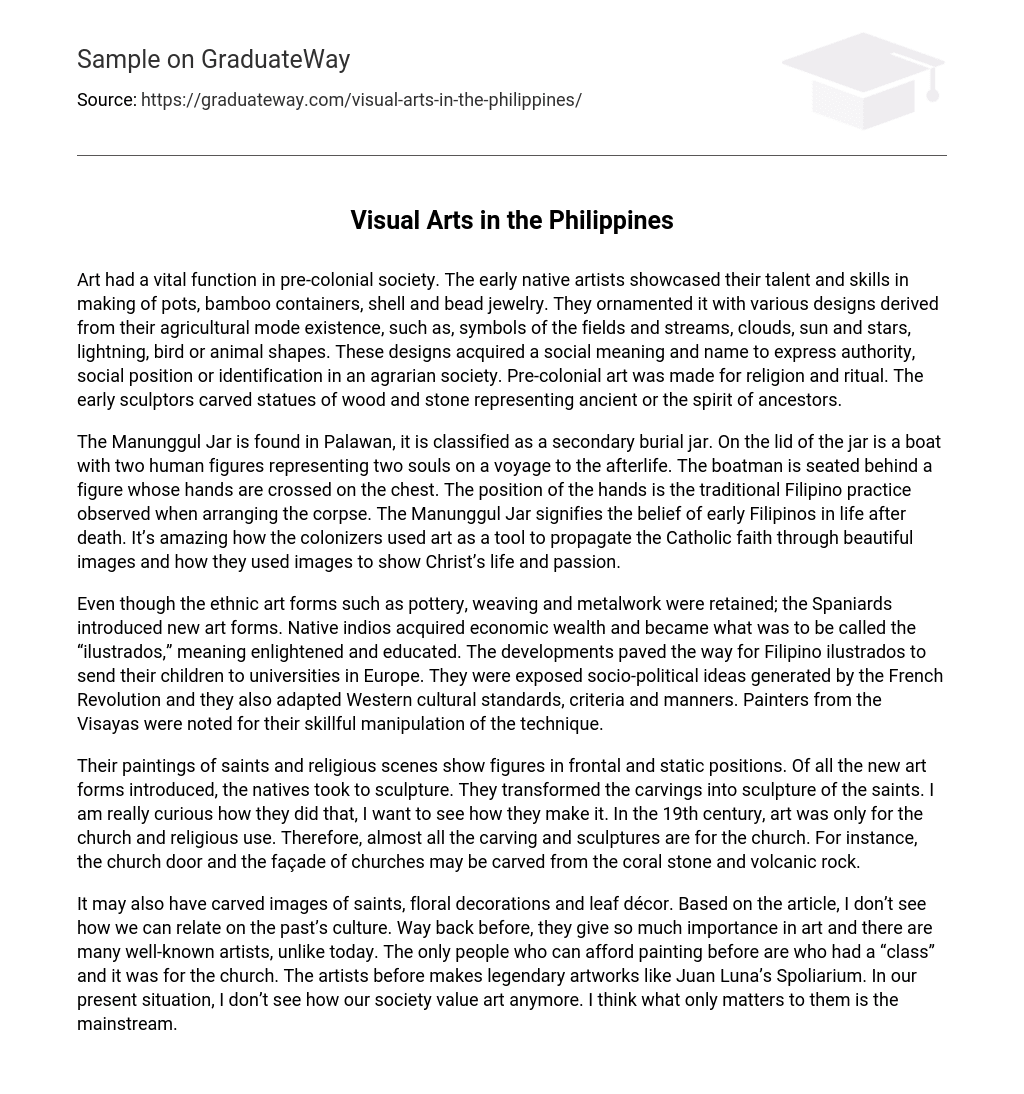Art had a vital function in pre-colonial society. The early native artists showcased their talent and skills in making of pots, bamboo containers, shell and bead jewelry. They ornamented it with various designs derived from their agricultural mode existence, such as, symbols of the fields and streams, clouds, sun and stars, lightning, bird or animal shapes. These designs acquired a social meaning and name to express authority, social position or identification in an agrarian society. Pre-colonial art was made for religion and ritual. The early sculptors carved statues of wood and stone representing ancient or the spirit of ancestors.
The Manunggul Jar is found in Palawan, it is classified as a secondary burial jar. On the lid of the jar is a boat with two human figures representing two souls on a voyage to the afterlife. The boatman is seated behind a figure whose hands are crossed on the chest. The position of the hands is the traditional Filipino practice observed when arranging the corpse. The Manunggul Jar signifies the belief of early Filipinos in life after death. It’s amazing how the colonizers used art as a tool to propagate the Catholic faith through beautiful images and how they used images to show Christ’s life and passion.
Even though the ethnic art forms such as pottery, weaving and metalwork were retained; the Spaniards introduced new art forms. Native indios acquired economic wealth and became what was to be called the “ilustrados,” meaning enlightened and educated. The developments paved the way for Filipino ilustrados to send their children to universities in Europe. They were exposed socio-political ideas generated by the French Revolution and they also adapted Western cultural standards, criteria and manners. Painters from the Visayas were noted for their skillful manipulation of the technique.
Their paintings of saints and religious scenes show figures in frontal and static positions. Of all the new art forms introduced, the natives took to sculpture. They transformed the carvings into sculpture of the saints. I am really curious how they did that, I want to see how they make it. In the 19th century, art was only for the church and religious use. Therefore, almost all the carving and sculptures are for the church. For instance, the church door and the façade of churches may be carved from the coral stone and volcanic rock.
It may also have carved images of saints, floral decorations and leaf décor. Based on the article, I don’t see how we can relate on the past’s culture. Way back before, they give so much importance in art and there are many well-known artists, unlike today. The only people who can afford painting before are who had a “class” and it was for the church. The artists before makes legendary artworks like Juan Luna’s Spoliarium. In our present situation, I don’t see how our society value art anymore. I think what only matters to them is the mainstream.





